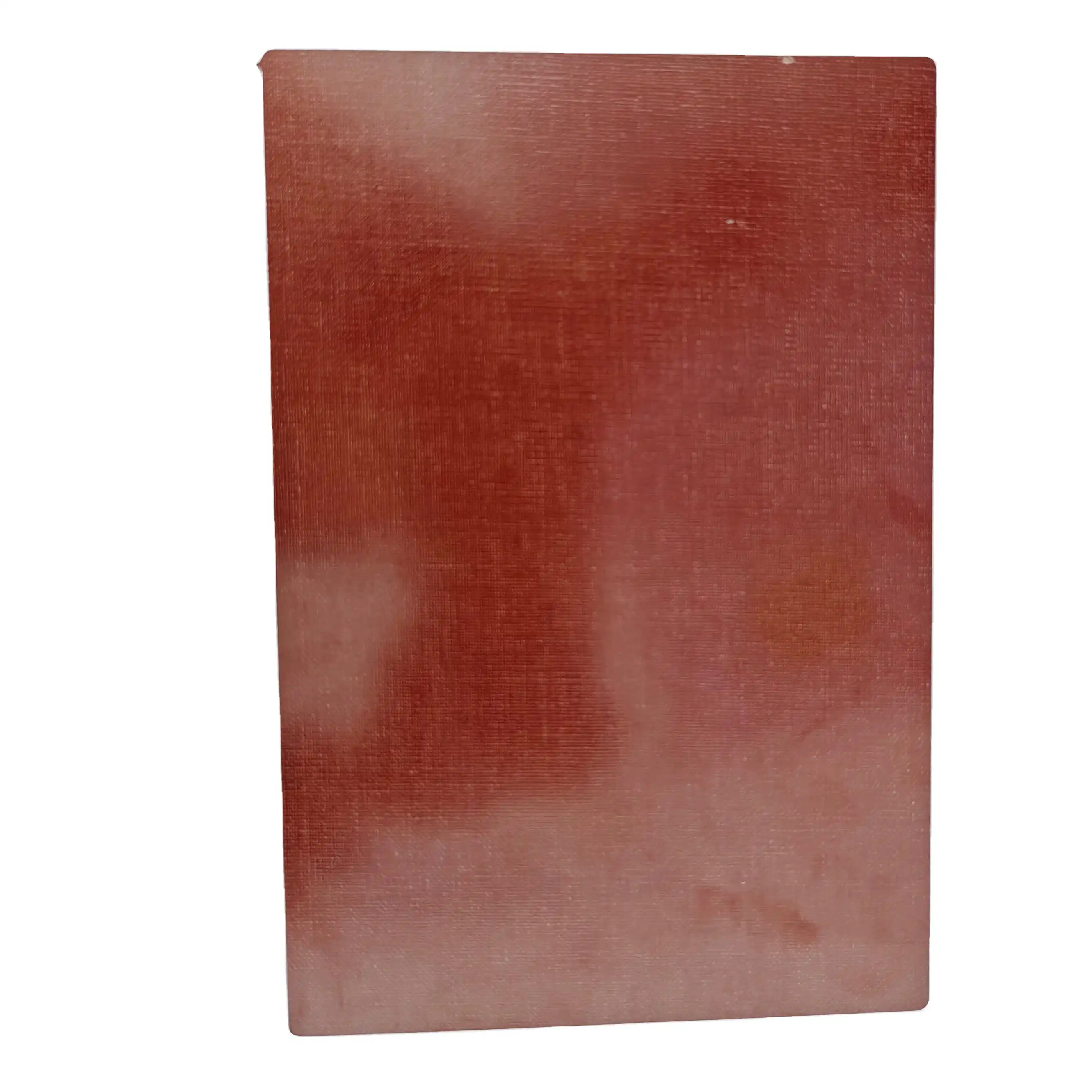Understanding CE Phenolic Sheet Properties and Applications
Composition and Characteristics of CE Phenolic Sheets
CE phenolic sheets are engineered composites consisting of woven cotton fabric thoroughly impregnated with phenolic resin. This combination produces a material renowned for its excellent electrical insulation, high mechanical strength, and notable thermal resistance. The sheets exhibit low moisture absorption, which helps maintain dimensional stability and prevents warping in humid environments. Their good machinability allows for precise fabrication into complex shapes, making CE phenolic sheets versatile and reliable for demanding industrial and electrical applications requiring both structural integrity and insulation.
Industry Applications and Performance Requirements
CE phenolic sheets find widespread use in electrical and electronic applications, aerospace components, automotive parts, and industrial machinery. Their ability to withstand high temperatures, resist chemical corrosion, and maintain dimensional stability under varying conditions makes them indispensable in these sectors. Understanding the specific performance requirements for each application is crucial for successful fabrication and implementation.
Grades and Specifications of CE Phenolic Sheets
Available in multiple grades such as NEMA CE, LE, and X, CE phenolic sheets cater to diverse industrial needs with distinct mechanical and electrical properties. The CE grade is typically used for general insulation purposes, while LE offers enhanced electrical properties and thermal resistance, and X grade provides superior mechanical strength. Familiarity with these specifications enables precise material selection to meet stringent industry standards and regulatory requirements, guaranteeing that fabricated components perform reliably under specific operational conditions.
Essential Fabrication Techniques for CE Phenolic Sheets
Cutting and Shaping Methods
Precision cutting is a fundamental aspect of CE phenolic sheet fabrication. Techniques such as sawing, water jet cutting, and laser cutting can be employed depending on the complexity of the design and the required finish. Each method has its advantages and limitations, and selecting the appropriate technique is crucial for achieving accurate dimensions and clean edges. Special attention must be paid to minimize dust generation and maintain tool sharpness when working with CE phenolic sheets.
Drilling and Hole-Making Processes
Drilling holes in CE phenolic sheets requires specific tools and techniques to prevent delamination and ensure clean, precise holes. High-speed steel or carbide-tipped drill bits are commonly used, with careful consideration given to feed rates and spindle speeds. For larger holes, step drilling or the use of hole saws may be necessary. Proper backing material and coolant application can significantly improve the quality of drilled holes.
Machining and Surface Finishing Techniques
Machining CE phenolic sheets involves processes such as milling, turning, and grinding to achieve desired shapes and surface finishes. CNC machining is often employed for complex geometries and high-precision components. Surface finishing techniques like sanding, polishing, and applying protective coatings can enhance the appearance and performance of the fabricated parts. It's important to consider the material's anisotropic properties when planning machining operations to minimize the risk of warping or delamination.
Advanced Fabrication Strategies for Optimal Results
Thermoforming and Bending CE Phenolic Sheets
While CE phenolic sheets are typically rigid, they can be thermoformed or bent to create curved or complex shapes under specific conditions. This process involves carefully heating the material to its glass transition temperature and applying pressure to achieve the desired form. Specialized equipment and molds are often required for successful thermoforming. Understanding the material's temperature-dependent properties and cooling rates is crucial for maintaining dimensional accuracy and avoiding stress-induced defects.
Bonding and Assembly Techniques
Joining CE phenolic sheets or attaching them to other materials often requires specialized bonding techniques. Adhesive bonding using epoxy or phenolic-based adhesives is a common method, offering high strength and chemical resistance. Mechanical fastening using screws, rivets, or bolts can also be employed, but care must be taken to avoid stress concentrations and potential crack initiation points. In some cases, a combination of adhesive bonding and mechanical fastening may provide the best results for complex assemblies.
Quality Control and Testing Procedures
Ensuring the quality and reliability of fabricated CE phenolic components is paramount. Implementing robust quality control measures throughout the fabrication process is essential. This includes dimensional checks, visual inspections for defects, and non-destructive testing methods such as ultrasonic scanning to detect internal flaws. Conducting performance tests specific to the intended application, such as dielectric strength tests for electrical components or mechanical stress tests for structural parts, helps verify the fabricated items meet required specifications and standards.
Conclusion
Mastering CE phenolic sheet fabrication techniques is a multifaceted endeavor that requires a deep understanding of material properties, advanced fabrication methods, and quality control procedures. By embracing these techniques and continually refining your skills, you can unlock the full potential of CE phenolic sheets in your manufacturing processes. The ability to fabricate high-quality components with precision and efficiency not only enhances product performance but also opens up new possibilities for innovation across various industries.
Contact Us
Ready to elevate your CE phenolic sheet fabrication capabilities? For expert guidance, high-quality materials, and comprehensive support, contact us at info@jhd-material.com. Let's collaborate to bring your engineering visions to life with precision and excellence.






